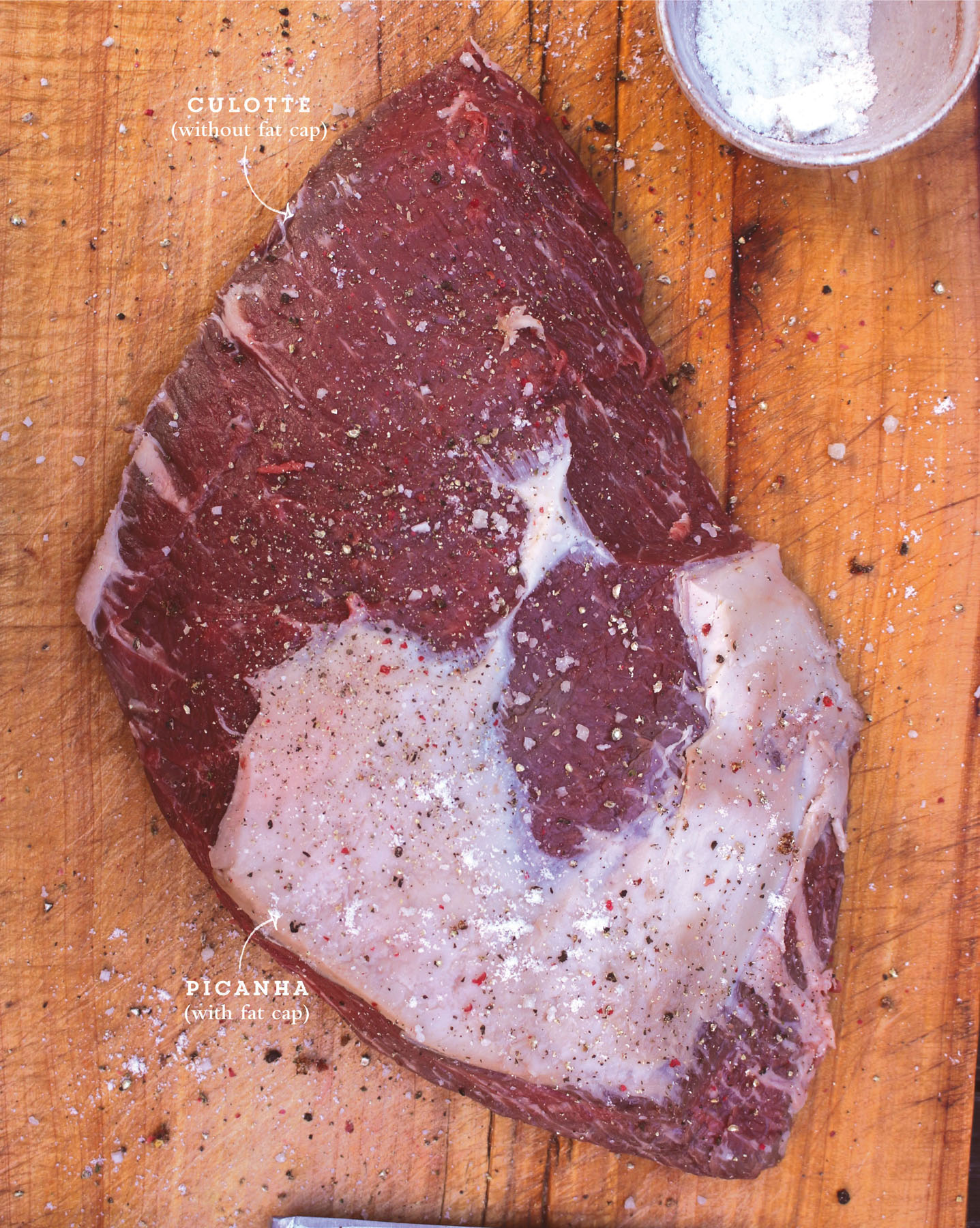TENDERNESS: not so tender, so slice accordingly
GRAIN: moderately coarse grain runs at a slight angle along the length of the steak
FAT: without the fat cap, culotte is lightly speckled with fat; the fat cap is mostly hard and generally quite thick
KEY FEATURES: coarser than a regular sirloin, but more flavourful; the fat cap can easily be trimmed or taken completely off, or in corporated into the cooking technique; reaches medium-rare at a slightly lower temperature than other cuts

© 2018 by Rob Firing
Behind the sirloin is a cap of muscle called culotte, or sometimes picanha if the fat cap is left intact. It can be cut into individual steaks for frying or grilling, but I like using the whole steak to take advantage of its handsome shape and straightforward slicing. The steak is a lopsided triangle, and the grain runs at a slight angle across its length, between the two farthest points of the triangle. Slicing across the grain will yield pieces with a little more chew than a typical sirloin, but I think more than manageable.
Because the steak changes shape as it cooks, I sometimes score the meat on one side to remind me which way the grain runs. If I leave the fat cap on, I always score the fat heavily, right down to the meat. Incorporating the fat as part of the steak itself is a wonderful offering. Even if your guests discard it, at least they have the option.
The muscle fibres in this steak are long, since the culotte is a single uncut muscle, and fairly strong. You will notice that it remains heavier on the grill for longer than most other cuts, and will contract, becoming thicker and rounder. This means you should be prepared to continue cooking it on a cooler part of your grill after it has developed enough crust, to bring it to medium-rare. An instant-read meat thermometer is particularly useful here, as the culotte’s size can make it tricky to gauge doneness by weight, and incision tests don’t always tell the whole story. Whole culottes will reach medium-rare closer to 120°F, due in part to the way they constrict when heated quickly.
As you will see in some of the recipes in this chapter, there are ways to make the fat cap quite delectable, almost like pork crackling. The culotte, treated right, will pleasantly surprise you, and is generally about one-third of the cost of striploin. I serve it regularly to guests, who eat every last bite, asking a hundred questions about this peculiarly delicious cut of beef.
PICANHA
Picanha is a contraction of donde se pica la aña, which is Portuguese for “where the cow is iron-branded.” In Brazil, picanha is an especially prized cut of beef and is often rotisserie cooked over a slow-burning fire or coals. When I’m gorging myself at rodízio-style (all you can eat) Brazilian churrascarias, I always leave room for picanha.